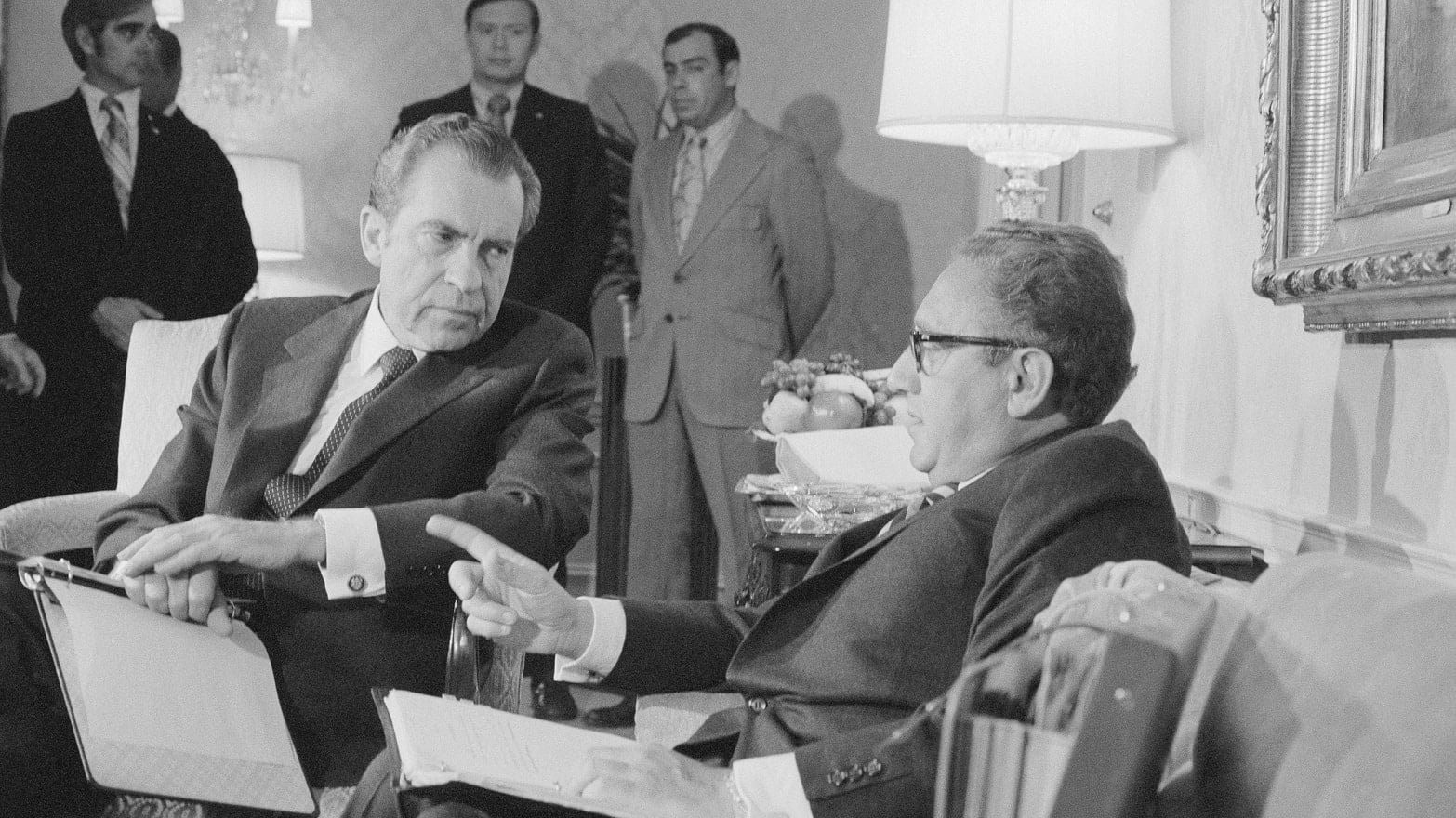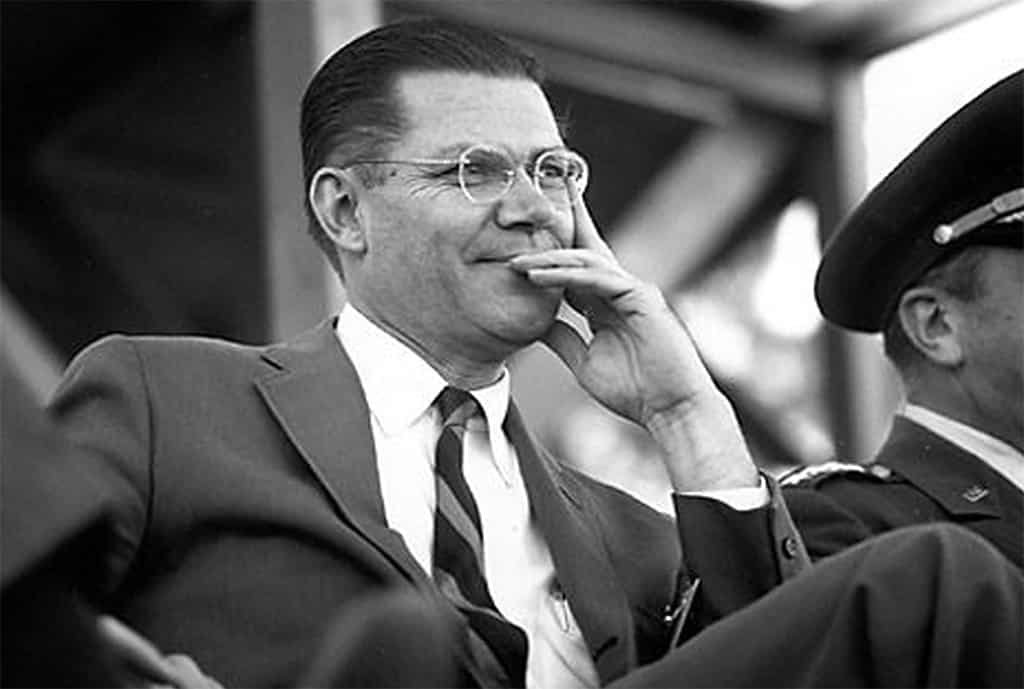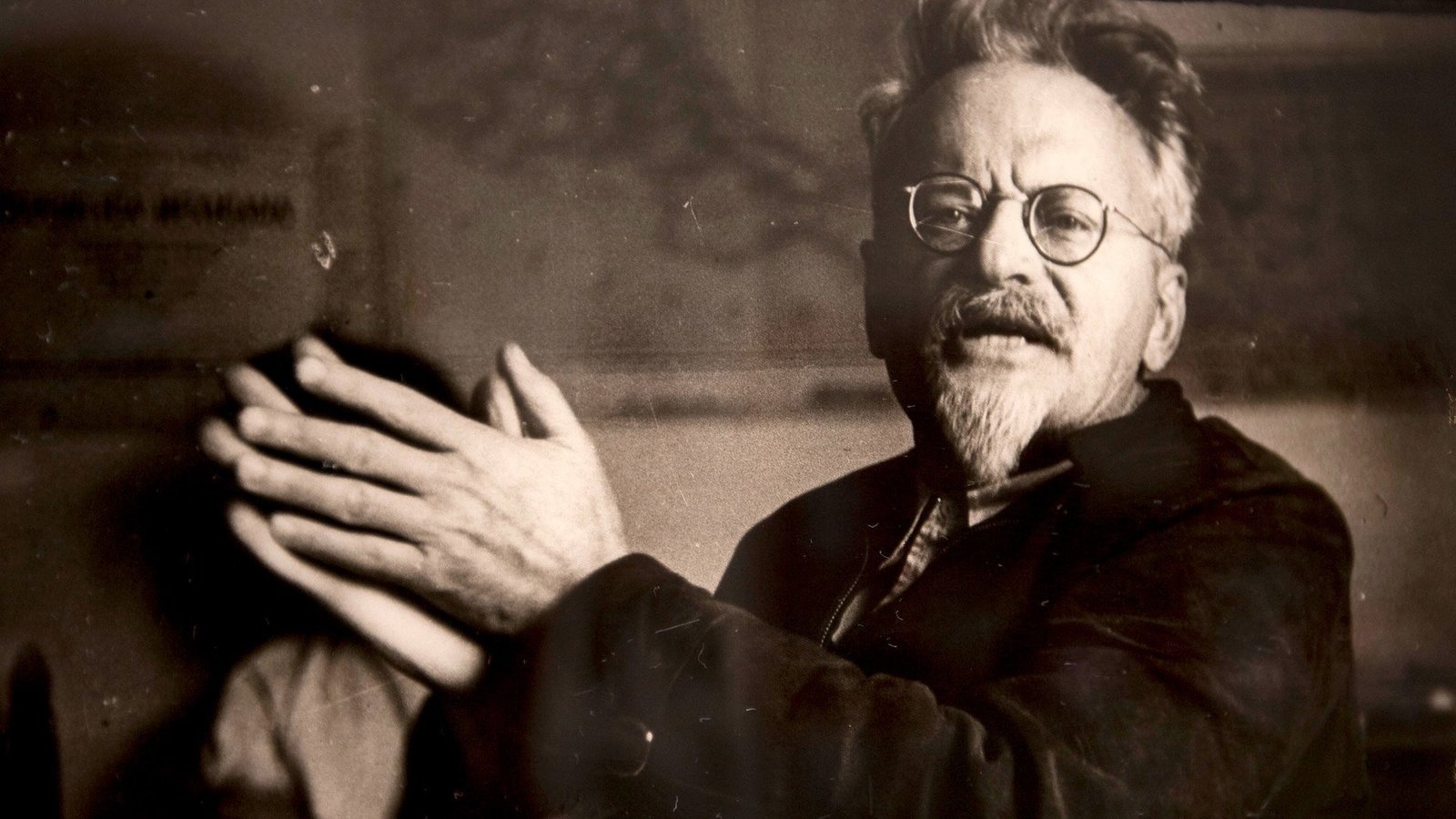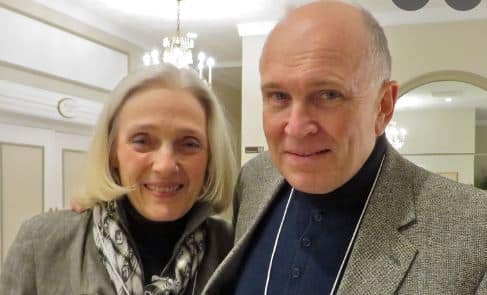PART 1 – PART 2 – PART 3 – PART 4
by Paul Fitzgerald and Elizabeth Gould
Most Americans outside Washington policy circles don’t know about Team B, where it came from, or what it did, nor are they aware of its roots in the Fourth International, the Trotskyist branch of the Communist International.
Lawrence J. Korb, a senior fellow at the Center for American Progress and assistant secretary of defense from 1981 to 1985, attributed the intelligence failure represented by 9/11 to Team B and had this to say about it in a 2004 article for the Los Angeles Times.

The roots of the problem go back to May 6, 1976, when the director of Central Intelligence, George H.W. Bush, created the first Team B to assess a report his agency had done on Soviet strategic objectives. The report — a National Intelligence Estimate, or NIE, completed the previous year — did not endorse a worst-case scenario of Soviet capabilities and, as a result, some outsiders demanded access to the same classified intelligence used by the CIA in preparing it so that they could come to their own conclusions.
The concept of a “competitive analysis” of the data done by an alternative team had been opposed by William Colby, Bush’s predecessor as CIA director and a career professional. But Bush caved in, under pressure from President Ford, who was facing a strong challenge from right-wing Republicans in that year’s presidential primary, as well as from then-Secretary of Defense Donald Rumsfeld’s Pentagon, which was trying to undermine support for Henry Kissinger’s detente with the Soviet Union.

The outside experts on Team B were led by Harvard professor Richard Pipes and included such well-known Cold War hawks as Paul Nitze, William Van Cleave and Paul Wolfowitz. Not surprisingly, Team B concluded that the intelligence specialists had badly underestimated the threat by relying too heavily on hard data instead of extrapolating Soviet intentions from ideology.
The Team B report was enthusiastically received by conservative groups such as the Committee on the Present Danger. But the report turned out to be grossly inaccurate. … Team B was right about one thing. The CIA estimate was indeed flawed. But it was flawed in the other direction.
Korb went on to explain that a 1978 Senate Select Committee on Intelligence review concluded “that the selection of Team B members had yielded a flawed composition of political views and biases. And a 1989 review concluded that the Soviet threat had been ‘substantially overestimated’ in the CIA’s annual intelligence estimates. Still, the failure of Team B in 1976 did not deter the hard-liners from challenging the CIA’s judgments for the next three decades.”
Now long forgotten, the origins of the Team B “problem” actually stretched back to the radical political views and biases of political theorist James Burnham, his association with the Communist revolutionary Leon Trotsky and the creation of powerful Eastern establishment ad hoc groups: the Committee on the Present Danger and the American Security Council.
From the outset of the Cold War in the late 1940s, an odd coalition of ex-Trotskyist radicals and right-wing business associations had lobbied heavily for big military budgets, advanced weapons systems and aggressive action to confront Soviet Communism. Vietnam was intended to prove the brilliance of their theories, but as described by author Fred Kaplan in “The Wizards of Armageddon” (page 336): “Vietnam brought out the dark side of nearly everyone inside America’s national security machine. And it exposed something seamy and disturbing about the very enterprise of the defense intellectuals. It revealed that the concept of force underlying all their formulations and scenarios was an abstraction, practically useless as a guide to action.”
Kaplan ended by writing: “The disillusionment for some became nearly total.” Vietnam represented more than just a strategic defeat for America’s defense intellectuals; it represented a conceptual failure in the half-century battle to contain Soviet-style Communism, but for Team B, that disillusionment represented the opportunity of a lifetime.
Trotskyist Intellectuals Become the New York Intellectuals Become Defense Intellectuals
Developed by an inbred class of former Trotskyist intellectuals, the Team B approach represented a radical transformation of America’s national security bureaucracy into a new kind of elitist cult.
In the 1960s, Robert McNamara’s numbers and statistics justified bad policy decisions. Now, personal agendas and ethnic grudges would turn American foreign policy into an ideological crusade. Today, those in control of that crusade fight desperately to maintain their grip, but only by de-encrypting the evolution of this secret “double government” can anyone understand America’s unrelenting post-Vietnam drift into despotism over the last 40 years.

Rooted in what can only be described as cult thinking, the Team B experiment tore down what was left of the CIA’s pre-Vietnam professional objectivity by subjecting it to politicization. Earlier in the decade, the CIA’s Office of Strategic Research (OSR) had been pressured by Nixon and Kissinger to corrupt its analysis to justify increased defense spending, but the Team B’s ideological focus and partisan makeup so exaggerated the threat that the process could never return to normal.
The campaign was driven by the Russophobic neoconservative cabal that included Paul Wolfowitz, Richard Pipes, Richard Perle, and a handful of old anti-Soviet hardliners such as Paul Nitze and Lt. Gen. Daniel Graham. It began with a 1974 article in The Wall Street Journal by famed nuclear strategist and former Trotskyist Albert Wohlstetter decrying America’s supposed nuclear vulnerability. It ended two years later with a ritualistic bloodletting at the CIA, signaling that ideology and not fact-based analysis had gained an exclusive hold on America’s bureaucracy.
The ideology referred to as neoconservatism can claim many godfathers, if not godmothers. Roberta Wohlstetter’s reputation as one of the pre-eminent Cold Warriors of RAND Corp. was equal to her husband’s. The couple’s infamous parties at their Santa Monica home acted as a kind of initiation rite for the rising class of “defense intellectual.”
But the title of founding father might best be applied to James Burnham. A convert from Trotsky’s inner circle, Burnham championed the anti-democratic takeover then occurring in Nazi Germany and Fascist Italy in his 1941 “The Managerial Revolution” and his 1943 “The Machiavellians: Defenders of Freedom,” while in his 1945 “Lenin’s Heir,” he switched his admiration, if only tongue in cheek, from Trotsky to Stalin.
George Orwell criticized Burnham’s cynical elitist vision in his 1946 essay “Second Thoughts on James Burnham,” writing: “What Burnham is mainly concerned to show [in “The Machiavellians”] is that a democratic society has never existed and, so far as we can see, never will exist. Society is of its nature oligarchical, and the power of the oligarchy always rests upon force and fraud. … Power can sometimes be won and maintained without violence, but never without fraud.”
Orwell is said to have modeled his novel “1984” on Burnham’s vision of the coming totalitarian state, which he described as “a new kind of society, neither capitalist nor Socialist, and probably based upon slavery.”
As a Princeton- and Oxford-educated scholar (one of his professors at Balliol College was J.R.R. Tolkien), Burnham landed a position as a writer and an instructor in the philosophy department at New York University just in time for the 1929 Wall Street crash. Although initially uninterested in politics and hostile to Marxism, by 1931, Burnham was radicalized by the Great Depression and, alongside fellow NYU philosophy instructor Sidney Hook, was drawn to Marxism.

Burnham found Trotsky’s use of “dialectical materialism” to explain the interplay between the human and the historical forces in his “History of the Russian Revolution” to be brilliant. His subsequent review of Trotsky’s book would bring the two men together and begin for Burnham a six-year odyssey through America’s Communist left that would, in this strange saga, ultimately transform him into the agent of its destruction.
As founder of the Red Army and a firebrand Marxist, Trotsky had dedicated his life to the spread of a worldwide Communist revolution. Stalin opposed Trotsky’s views as being too ambitious, and the power struggle that followed Lenin’s death splintered the party. By their very nature, the Trotskyists were experts at infighting, infiltration, and disruption.
Burnham reveled in his role as a Trotskyist intellectual and in the endless debates over the fundamental principle of Communism (dialectical materialism) behind Trotsky’s crusade. The “Communist Manifesto” approved the tactic of subverting larger and more populist political parties (entryism), and following Trotsky’s expulsion from the Communist party in November 1927, his followers exploited it. The most well-known example of entryism was the so-called French turn when in 1934 the French Trotskyists entered the much larger French Socialist Party (the SFIO) with the intention of winning over the more militant elements to their side.
That same year, the American followers of Trotsky in the Communist League of America (the CLA) did a French turn on the American Workers Party (the AWP) in a move that elevated the AWP’s James Burnham into the role of a Trotsky lieutenant and chief adviser.
Burnham liked the toughness of the Bolsheviks and despised the weakness of the liberals. According to his biographer, Daniel Kelly: “He took great pride in what he saw as its hard-headed view of the world in contrast to philosophies rooted in ‘dreams and illusions.’ ” Burnham also delighted in the tactics of infiltrating and subverting other leftist parties and in 1935 “fought tirelessly for the French turn” of a far larger Socialist Party (the SP), some 20,000 strong. The Trotskyists intended “to capture its left wing and its youth division, the Young People’s Socialist League (YPSL),” Kelly wrote, “and take the converts with them when they left.”

Burnham remained a “Trotskyist intellectual” from 1934 until 1940. But although he labored six years for the party, it was said of him that he was never of the party, and as the new decade began, he renounced both Trotsky and “the ‘philosophy of Marxism’ dialectical materialism” altogether. He summed up his feelings in a letter of resignation on May 21, 1940: “Of the most important beliefs, which have been associated with the Marxist Movement, whether in its reformist, Leninist, Stalinist or Trotskyist variants, there is virtually none which I accept in its traditional form. I regard these beliefs as either false or obsolete or meaningless; or in a few cases, as at best true only in a form so restricted and modified as no longer properly to be called Marxist.”
In 1976, Burnham wrote to a legendary secret agent, identified by biographer Kelly as the British political analyst Brian Crozier, that he had never swallowed dialectical materialism or the ideology of Marxism but was merely being pragmatic given the rise of Hitler and the Depression.
But given the influential role Burnham would come to play in creating the new revolutionary class of neoconservatives, and their central role in using Trotsky’s tactics to lobby against any relationship with the Soviet Union, it’s hard to believe Burnham’s involvement with Trotsky’s Fourth International was only an intellectual exercise in pragmatism.
Copyright – 2022 Fitzgerald & Gould All rights reserved – Image Source: Wikimedia
PART 1 – PART 2 – PART 3 – PART 4

Paul Fitzgerald and Elizabeth Gould are authors of Invisible History: Afghanistan’s Untold Story, published by City Lights (2009), Crossing Zero The AfPak War at the Turning Point of American Empire, published by City Lights (2011). Their novel The Voice, was published in 2001. Their memoir, The Valediction Three Nights of Desmond (2021) and The Valediction Resurrection (2022) was published by TrineDay. For more information visit invisiblehistory , grailwerk and valediction.net
ATTENTION READERS
We See The World From All Sides and Want YOU To Be Fully InformedIn fact, intentional disinformation is a disgraceful scourge in media today. So to assuage any possible errant incorrect information posted herein, we strongly encourage you to seek corroboration from other non-VT sources before forming an educated opinion.
About VT - Policies & Disclosures - Comment Policy




“a new kind of society, neither capitalist nor Socialist, and probably based upon slavery.”
I forget who defined the neo-cons as unpatriotic souls disguised as patriots. At the top they are almost 100% Jewish/Zionist with zero love of country. But, back to the above quote. “… and probably based on slavery”. No probably about it, slavery is the goal. Imagine 2035 when and if the few get their wishes, all vehicles are to be electric. And the social credit score is in its 10th year. Imagine your driving and your car suddenly shuts off. Why? Because your SC score dropped below 700. At the same time imagine your digital currency, which has an expiry date, is suddenly restricted to certain food purchase only, let’s say, 1100 calories per day, nothing else. Imagine your smart refrigerator door is locked except for 2 15 minute periods each day, the same with your new smart electric stove. Damn that smart meter! Imagine things like that. No more need of whips and chains. And God forbid your personal carbon footprint is too large. It’s off to reeducation day for you. Imagine access to everything is halted on the day your monthly booster shot is due. “Is this? “just my imagination”.
I just wish to say that al of them at the top and the bottom are laboring for one thing. It is the one thing that everyone things they need in order to survive in this world. When they have labored for their sustenance, they bow down to this one thing and worship it as God saying give me food, give me shelter. What is this thing? It is money. Mankind will never be free until he gets rid of it and the entire financial system and this means no CBDC either and no banks.
Comments are closed.